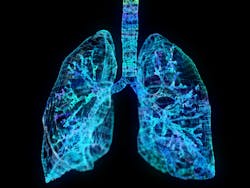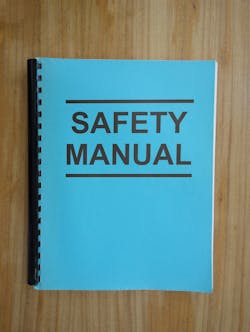An EHS Today Special Report
As we near the end of 2022, it’s a fair question to ask: Did anything really change over the past year?
While COVID cases have dropped off considerably over the past year, we’re still in a pandemic, and there’s no clear sign that the World Health Organization (WHO)—which officially declared the pandemic back in March 2020—plans to call it off any time soon.
The predicted “red wave” from the midterm elections turned out to be a mirage, and it sounds like we’re in for two years of solid political gridlock.
And far too many workers are still getting injured and killed on the job and on the highways from safety violations of the industrial kind (e.g., falls from heights, explosions and electrocutions) as well as the psychological kind (e.g., active shooting and suicides).
Rather than sugarcoating the bad news by focusing only on positive developments, our year-end wrap-up will do what it’s designed to do: review some of the major trends in the EHS profession (these trends are not ranked in any particular order) and shine a light on where progress occurred and where more work needs to be done. It’s likely, but not at all certain, that the pandemic could end in 2023, but the COVID variants—and vaccinations—will be with us for who knows how long. Meanwhile, safety leaders will continue to do what they always do: make their workplaces and communities safer.
In any event, we here at EHS Today wish all our readers the very happiest of holidays and an equally Happy New Year.
Pain in the Back… and the Neck, and the Shoulder, and…
One in two Americans experiences back, neck or shoulder pain, or another musculoskeletal disorder (MSD) in any given year, according to data from the Centers for Disease Control and Prevention as well as the National Health Interview Survey. That translates to over 252 million adults who are in pain. And despite the population with MSD conditions remaining relatively constant, the economic cost of MSD medical claims has doubled in the U.S. over the last decade.
MSD care remains one of the top three cost drivers in the U.S. health system, consuming one-sixth of employer-sponsored plan dollars and costing $600 billion to the U.S. economy.
Part of the cost is that people with MSD pain missed 8.2 days of work, more than double the average workers’ sick days. For those who experience MSD pain and mental health needs, the figure increases to 13 days.
To address this situation, more than 100 companies, representing 2.6 million employees, have taken the MSD Pledge, a commitment to reduce MSDs in the workplace. The initiative is under the leadership of the National Safety Council (NSC), with support from retail giant Amazon. By signing the pledge, these organizations have committed to:
- Analyzing the causes of MSD injuries and invest in solutions and practices that reduce risks to workers;
- Leveraging innovations and share learnings that improve safety practices;
- Building a culture of safety where everyone, at every level, is accountable for the safety and health of workers;
- Collectively reducing MSD risk and subsequent injuries across the pledge community by 25% by 2025.
DEI in the Workplace
Diversity, equity and inclusion (DEI) has moved from an initiative to a strategic necessity. Much of the emphasis in developing DEI programs is to recognize the varying backgrounds, cultures and other characteristics of specific groups of people. Understanding, appreciating and—most importantly—including every employee and tapping into their knowledge are at the heart of DEI’s mission.
In the safety realm, the strategy has moved to the understanding that when employees can be their authentic selves and therefore feel secure at work, they can then extend their safety reach toward the entire organization.
“If you view safety from the perspective of a company culture at the highest level, safety means having each other’s back,” says Lorraine Martin, CEO of the NSC. “Our heads are in the game, and we are watching out for each other. Therefore, all leaders—safety professionals included—need to understand the diversity of who they need to serve.” To watch out for each other, employees must “feel that their voices matter and they are able to use that voice to keep everyone safe,” she adds.
Therefore, it becomes the responsibility of companies to create an environment where people are able to speak up when they see unsafe processes and not worry about retribution. “In company cultures where employees may not feel safe or don’t feel included, the first reaction to seeing an unsafe situation is to mind your own business,” explains Martin. “This culture of non-belonging and potentially fear causes safety hazards to go undetected.”
Beating the Heat
In April, the Occupational Safety and Health Administration (OSHA) launched a National Emphasis Program (NEP) to protect millions of workers from heat illness and injuries. As part of the program, OSHA will proactively initiate inspections in over 70 high-risk industries in indoor and outdoor work settings when the National Weather Service has issued a heat warning or advisory for a local area. On days when the heat index is 80 degrees Fahrenheit or higher, OSHA inspectors and compliance assistance specialists will engage in proactive outreach and technical assistance to help stakeholders keep workers safe on the job.
Inspectors will also look for and address heat hazards during inspections, regardless of whether the industry is targeted in the NEP.
According to the agency, the three-year average of workplace deaths caused by heat has doubled since the early 1990s.
OSHA’s On-Site Consultation Program, a free and confidential health and safety consulting program for small- and medium-sized businesses, will assist employers in developing strategic approaches for addressing heat-related illnesses and injuries in the workplace.
Preventing Workplace Violence
When is it going to end? When will the incidence of mass shootings and workplace violence become a rarity rather than a daily item in the news? From 1992-2019, workplace violence killed almost 18,000 people, according to a study conducted by NIOSH, the Bureau of Justice Statistics and the Bureau of Labor Statistics (which includes incidents that occurred outside the workplace but stemmed from work-related issues.)
While this is not a new problem, the current situation represents a renewed challenge to employers because it has arisen following the widespread deterioration of mental and emotional health because of the COVID-19 lockdowns.
As of press time, there have been 662 mass shootings in the U.S. this year, resulting in 671 fatalities and 2,616 wounded. Murder rates in a number of cities have hit record levels, as have the incidents of assault and injuries resulting from street violence. It is not surprising that the soaring rise in the crime rate has risen to the level of a top public concern.
At EHS Today’s Safety Leadership Conference 2022, NSC’s Kenna Carlsen pointed out that workplace violence impacts on organizational health in a number of ways: physical (e.g., injuries and fatalities), psychological (e.g., anxiety, stress, depression, burnout), financial (e.g., medical costs, increased absenteeism), and social (e.g., disturbed relationships, withdrawal). She outlined the five building blocks of an effective workplace violence prevention plan, which include: top-down management; worksite analysis and hazard identification; hazard prevention and control; health and safety training; and record-keeping and program evaluation.
Various technologies are available to help companies and safety leaders address workplace violence, such as virtual reality training programs, access control equipment, weapons detection sensors, lone worker monitoring wearables, and panic button wearables and apps.
The ‘New’ Black Lung Disease
This past summer, the federal Mine Safety and Health Administration (MSHA) launched an enforcement initiative targeting the exposure of coal miners to respirable crystalline silica, which when added to coal dust creates a more deadly form of black lung disease than the older form of the illness. The new initiative focuses on both coal and other, non-coal mining operations, such as mining for metals.
Crystalline silica is a common mineral found in the Earth’s crust. Materials such as sand, stone, concrete and mortar contain crystalline silica. Respirable crystalline silica—minute particles at least 100 times smaller than ordinary beach sand—become airborne during the cutting, sawing, grinding, drilling and crushing of stone and rock.
Without proper protections and engineering controls in place, miners can be exposed to dangerous levels of crystalline silica particles, which increases their risk of developing serious silica-related diseases, MSHA observed. These conditions can include incurable lung diseases such as coal workers’ pneumoconiosis, commonly referred to as “black lung;” progressive massive fibrosis, the most severe form of black lung; silicosis; lung and other cancers; chronic obstructive pulmonary disease and kidney disease.
The relatively new version of black lung disease came to prominence late in the last decade and it has been observed to progress more quickly than the older version, resulting in some coal miners dying from it in their 20s. The widespread addition of silica to coal dust is believed to have occurred because seams of almost pure coal have been disappearing, resulting in the mining of more coal mixed with rock. Back in June, MSHA said it hopes to have a silica rule in place by the end of the year.A Mentally Healthier Workplace
In a study of more than 11,000 U.S. employees conducted by Mental Health America, 71% of respondents said they find it difficult to concentrate at work due to stress and distractions of various kinds. Another study conducted by Robert Half indicated that 41% of 2,400 U.S. workers feel more burned out than they did a year ago—even as COVID recedes as a health or workplace concern.
Whether the pandemic is to blame or has just helped expose the issue, worker burnout is typically caused by heavier-than-normal workloads and staff shortages, exacerbating the "doing more with less" syndrome affecting large swaths of the working population.
On top of burnout, an estimated 15% of working-age adults have a mental disorder at any point in time, according to the WHO. From a cost perspective, depression and anxiety are estimated to cost the global economy U.S. $1 trillion each year, driven predominantly by lost productivity.
According to the Society for Human Resource Management Foundation, tens of millions of U.S. workers are experiencing mental health issues and are less productive because of it, inundating organizations with a vast array of new challenges. “Mental health issues, such as burnout and stress, are hampering short-term productivity and long-term business growth,” the organization says.
EHS Today’s Mental Health in the Workplace Report found that a large number of employers say they are prioritizing mental health as part of their wellness programs, with 82% saying they have a program in place that focuses on mental health and 6% saying they have one planned.
In its “2022 Mind the Workplace” report, the nonprofit Mental Health America suggests EHS professionals can contribute to a mentally healthier workplace by taking the following actions:
- Cultivating relationships with employees based on trust and respect;
- Applying active listening skills;
- Providing appropriate guidance to assist employees with workload management;
- Becoming aware of signs of increasing stress or burnout in employees; and
- Encouraging employees to take time off when needed.
OSHA Fines
At the beginning of 2022, OSHA announced a 5% increase in the civil penalties assessed for violations of its regulations. The maximum penalty for willful or repeated violations increased by nearly $10,000 from 2021 to $145,027. The maximum penalty for failure-to-abate violations rose to $14,502 for each day after the abatement deadline where no abatement has taken place. And the maximum penalty allowed for serious, other-than-serious and posting requirements violations increased by nearly $1,000 to $14,502. All states with their own occupational safety and health agencies were required to adopt maximum penalty levels at the same level (if not higher) as federal OSHA.
The good news for employers is that the penalties could have gotten much more severe. Perhaps because it was an election year, the U.S. Senate decided not to go forward with the potential quadrupling of fines that the U.S. House of Representatives had recommended. The House bill would have increased the maximum penalty for willful or repeated violations to $700,000, with the imposition of a $50,000 minimum.
However, as a result of the 2015 Federal Civil Penalties Inflation Adjustment Act Improvements Act, passed during the Obama administration, OSHA’s fines and civil penalties are adjusted upward each January to match the previous year’s rise in the Consumer Price Index. With inflation running rampant throughout the economy over the past year, employers should brace themselves for a steeper-than-usual rate hike from OSHA early in the new year.
Sustainability and Corporate Health
The success of corporate sustainability programs hinges upon four primary factors: staffing, funding, employee support and meaningful metrics. These are the top areas companies struggle with when implementing or maintaining a sustainability program, according to EHS Today’s 2022 Sustainability Progress Report.
Industry consultants suggest that companies should prioritize sustainability initiatives as a strategic focus to overcome these challenges—and they may not have a choice. Earlier this year, the Securities and Exchange Commission proposed rule changes that would require registrants to include information about climate-related business risks. Also, an Intergovernmental Panel on Climate Change report suggested that industry needs to play a critical role in achieving net-zero greenhouse gas emissions targets.
Company size can impact how an organization implements and executes a sustainability program. While virtually all large public companies have some kind of ESG (environment, social and governance) plan in place, that’s certainly not the case for smaller, privately-held companies. But no matter what the size of the company, it’s important that leadership demonstrates the strategic value of these efforts, and given their central role within the company, EHS professionals are increasingly being asked to shoulder some of that responsibility—if they haven’t already.
Stakeholders and employees alike are paying much closer attention to how seriously companies are adhering to their stated ESG goals. Merely paying lip service to sustainability is no longer, well, sustainable as a corporate strategy.
Whether it’s mitigating environmental risks in the workplace (e.g., heat-related stress), complying with regulatory agencies, or leading recycling and waste reduction efforts, companies are achieving tangible benefits from their ESG programs. Sixty percent of companies surveyed for the EHS Today report indicated they have already achieved modest to significant value from their ESG initiatives. The biggest barriers to more progress are insufficient staffing and insufficient funding.
Drug Testing
One of the biggest dilemmas facing employers today is how to maintain a safe workplace while laws and popular attitudes toward psychoactive drugs, such as marijuana, appear to be lining up against them. This is particularly true for employers in industries with safety-sensitive jobs, such as construction, warehousing, transportation and manufacturing.
Along with legalizing medical and recreational marijuana, some states also have passed additional laws that prohibit employers from discriminating against workers who use cannabis off the job—except for those who are restricted by law. Also, debate continues to rage over what is the most appropriate and effective testing method for employers to use.
In its guidance to employers on how to deal with opioid use disorder, the U.S. Department of Justice said that drug addiction is considered a disability under the Americans with Disabilities Act (ADA)—but only as long as the individual is not currently using illegal drugs. The ADA regulations define “current illegal use of drugs” as the “illegal use of drugs that occurred recently enough to justify a reasonable belief that a person’s drug use is current or that continuing use is a real and ongoing problem.”
Employers may have a drug policy and conduct drug testing for opioids. However, an employee who tests positive because they are taking legally prescribed opioids may not be fired or denied employment based on their drug use unless they cannot do the job safely and effectively or they are disqualified under another federal law, such as Department of Transportation regulations.
Employers should also be aware that the Equal Employment Opportunity Commission says that employees may be entitled to take leave under the Family and Medical Leave Act for their treatment or recovery.
Safety Technology
When EHS Today asked 1,100 safety professionals what was the biggest workplace challenge they faced, by far the most common answer was a need for more staff, more employees, more resources, more support, or some variation of too much work and not enough workers. In fact, the theme of the 2022 National Safety and Salary Survey could be summed up as: "Doing more with less."
One of the lasting impacts of the pandemic is that it has driven many people out of the workplace entirely, forcing employers to scramble for ways to keep making and delivering products despite shrinking or remotely-located staffs.
As a result, safety leaders find themselves having to constantly train new workers (when they can find them), while reinforcing a consistent safety message throughout the workforce. Establishing and maintaining a culture of safety becomes very difficult when the workplace itself resembles a revolving door of incoming and outgoing employees.
That situation has helped propel the adoption and use of various types of technology to improve workplace safety. As the pandemic’s impact has lessened, the need for companies to invest heavily in personal protective equipment to protect workers from COVID has also diminished.
Now, those safety budgets are being used on technologies that have continued to advance in capabilities over the past several years, particularly for various digital solutions, such as artificial intelligence, data-based analytics tools, Internet of Things sensors, wearable apps and mobile devices, and virtual reality-based training modules and equipment.
According to Christopher Sayers, an industry analyst in research firm Verdantix’s EHS practice, “For the past two years, the sudden and nascent challenges posed by the pandemic have dictated EHS budget allocations, leading to inflated occupational health and PPE spend.” It remains an open question as to whether EHS professionals can expect budget levels on a par with what they saw the past couple years.
“With inflation in the U.S. and U.K. surpassing 8%, many firms are increasing EHS budgets in reaction to heightened prices," Sayers said. "Significantly, few firms will be reducing their EHS budgets, with only 1% expecting decreases in 2023, highlighting the resilience of EHS in the face of economic uncertainty.”
Dave Blanchard, Adrienne Selko, Nicole Stempak, David Sparkman and Jonathan Katz contributed to this article.













